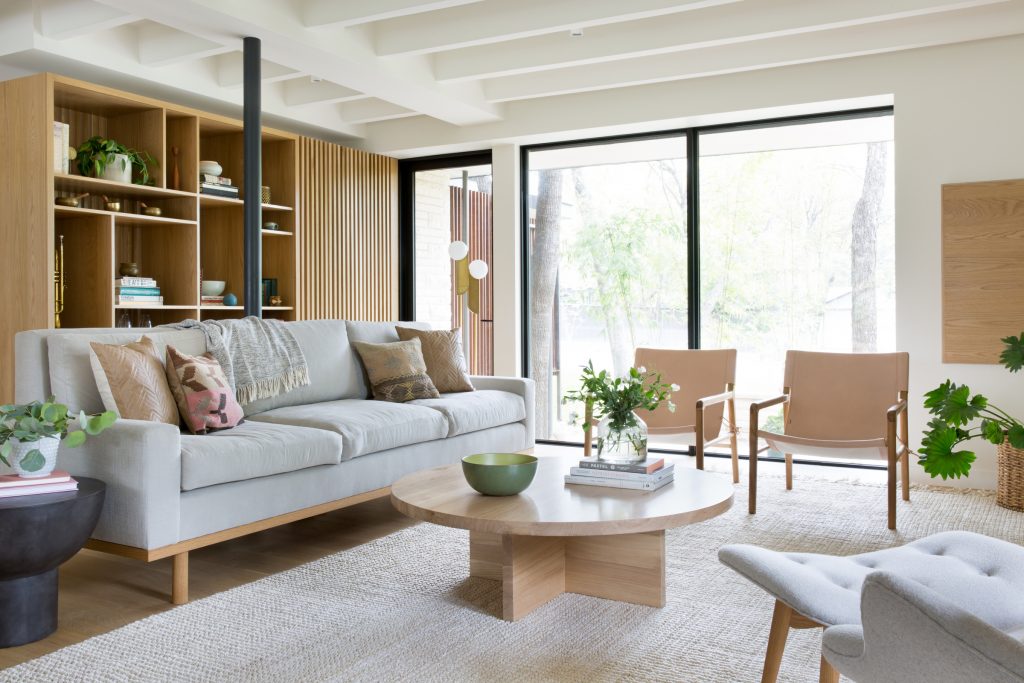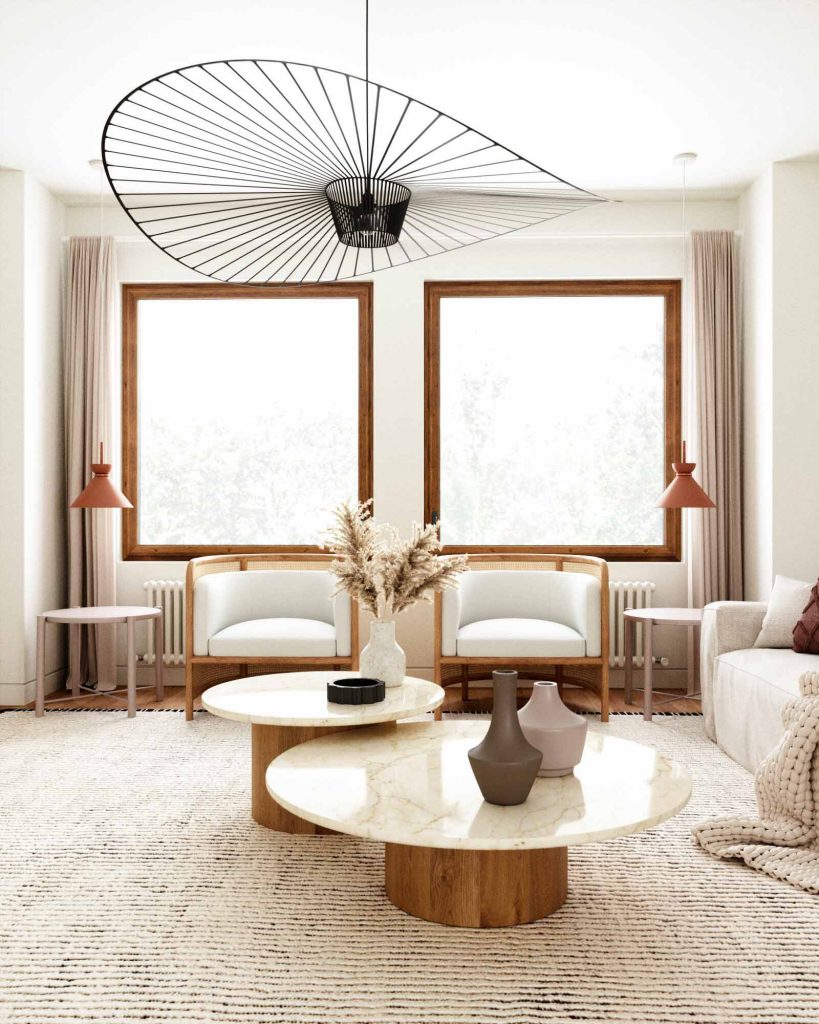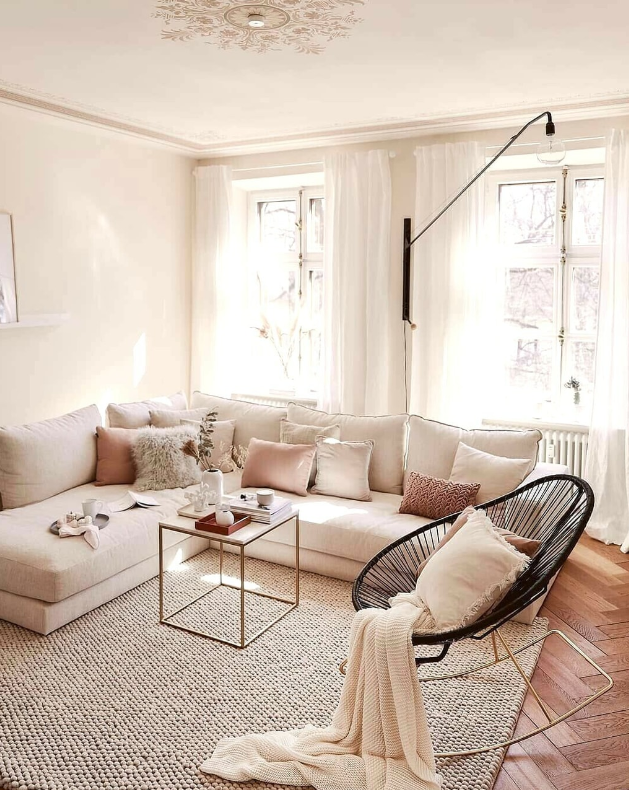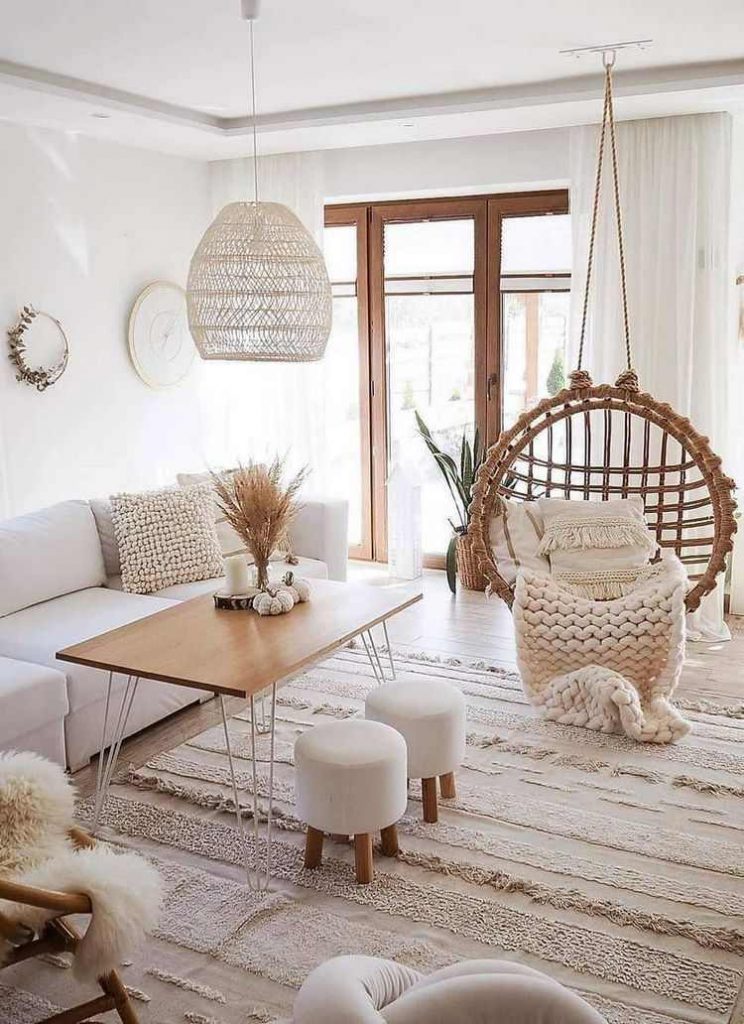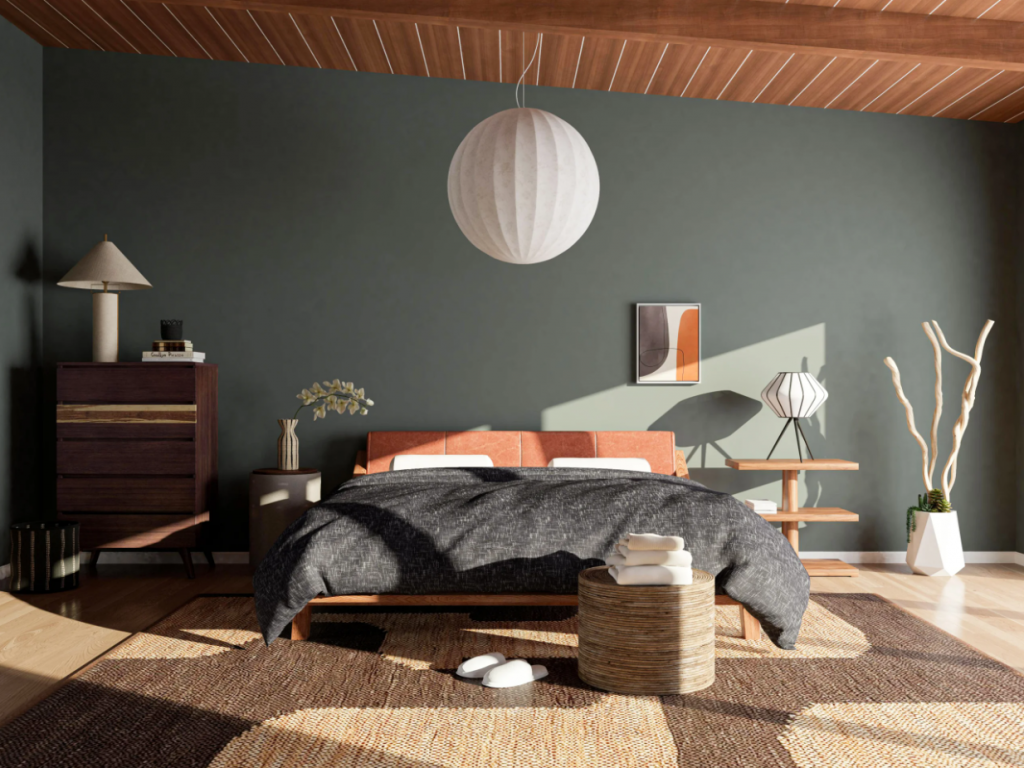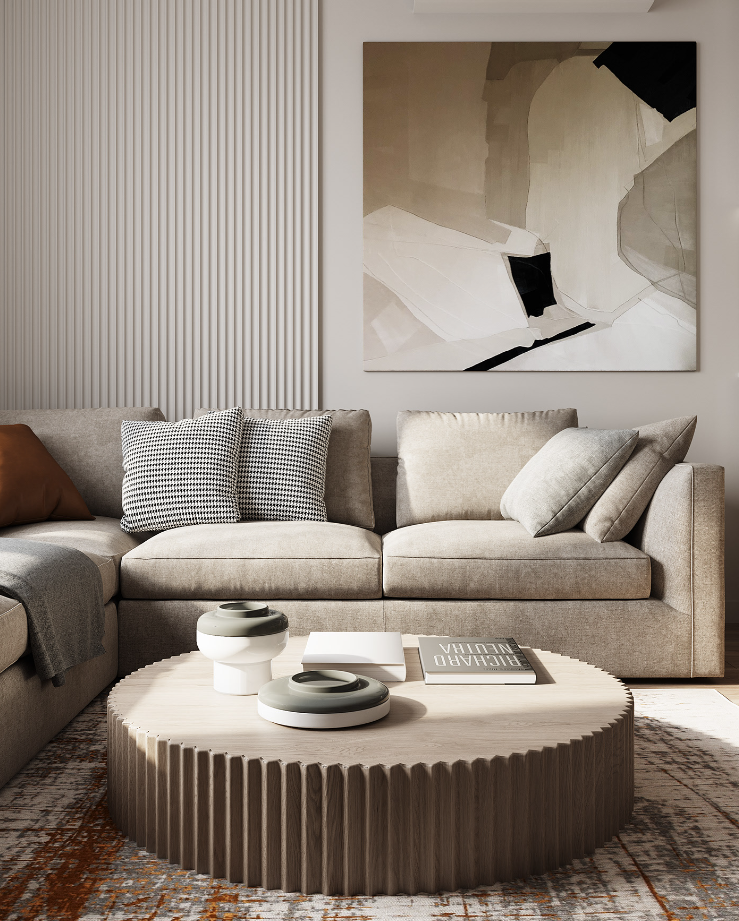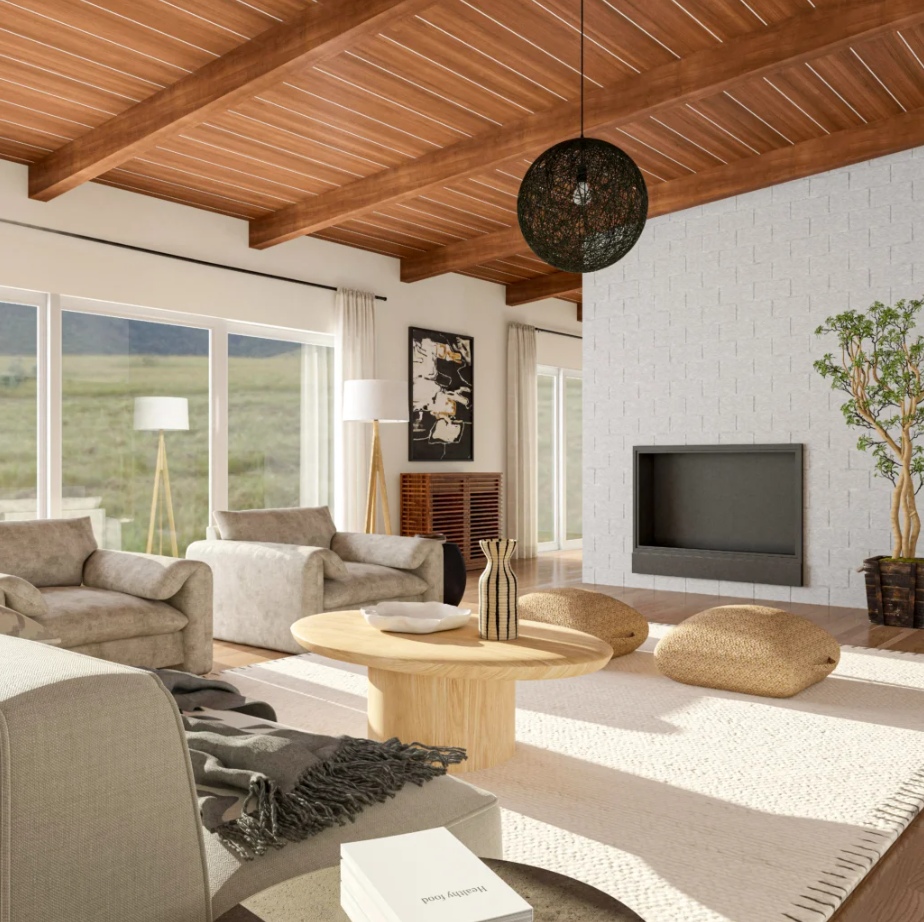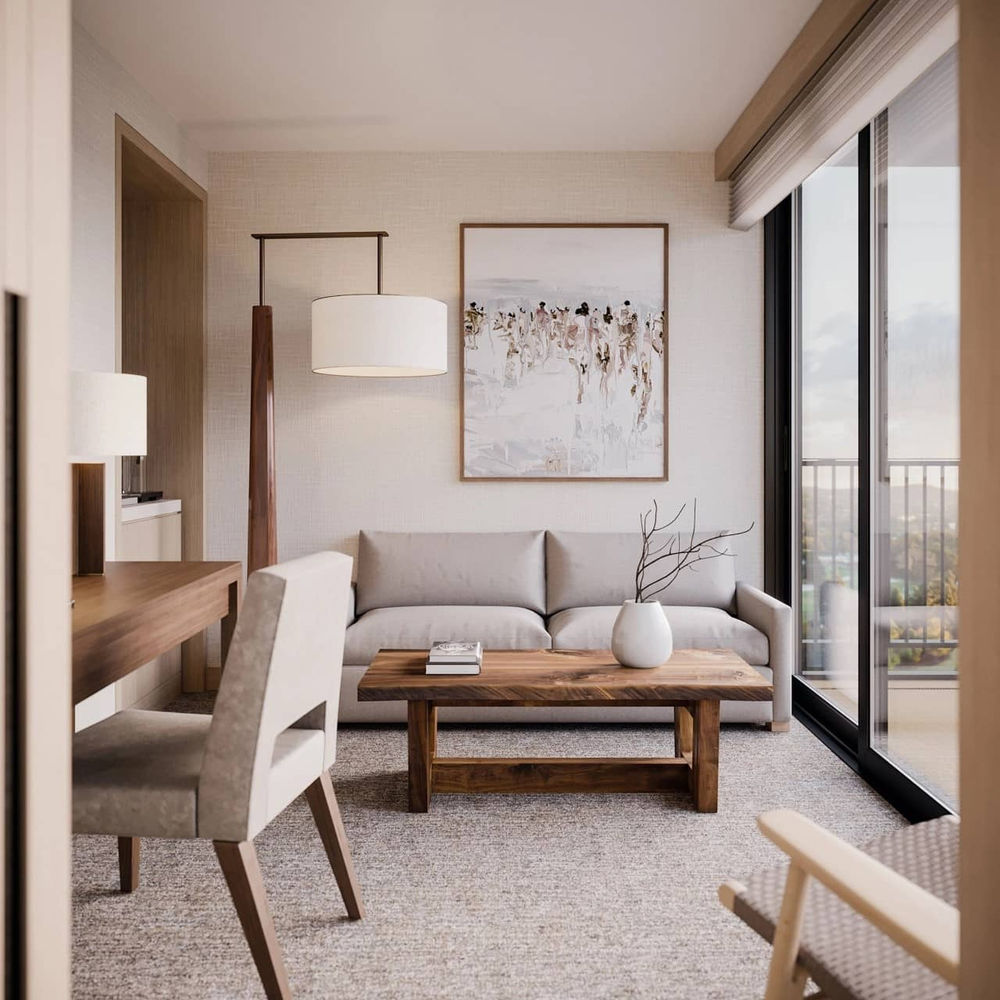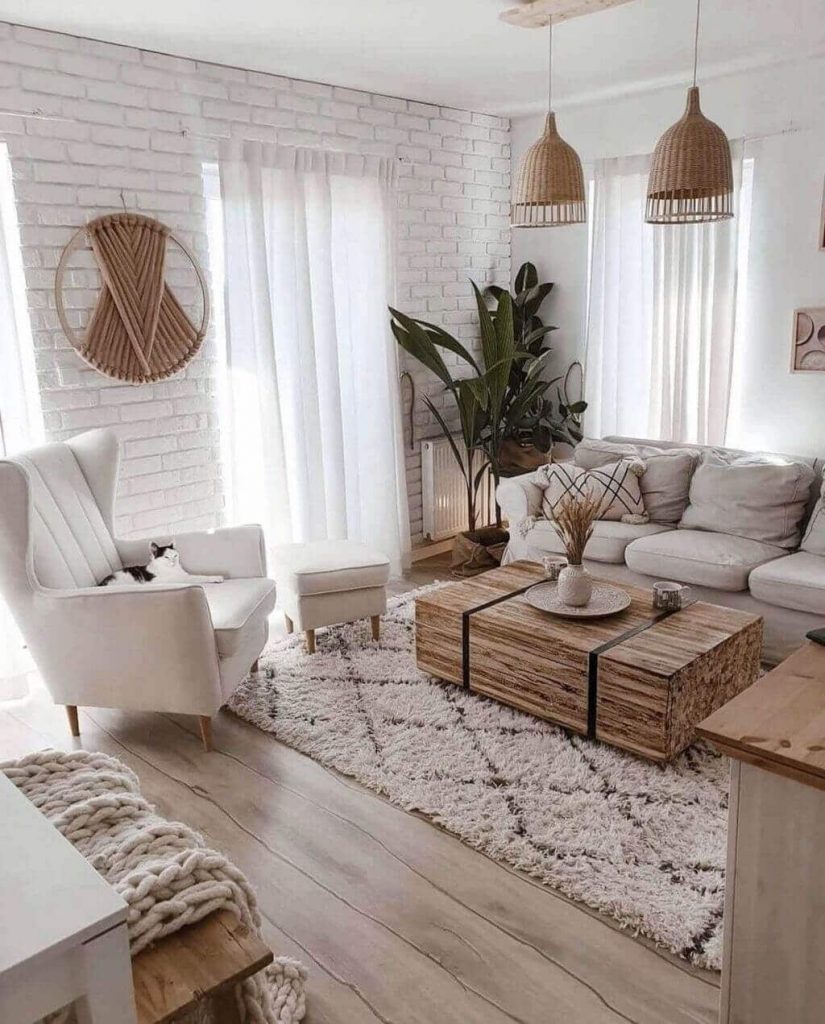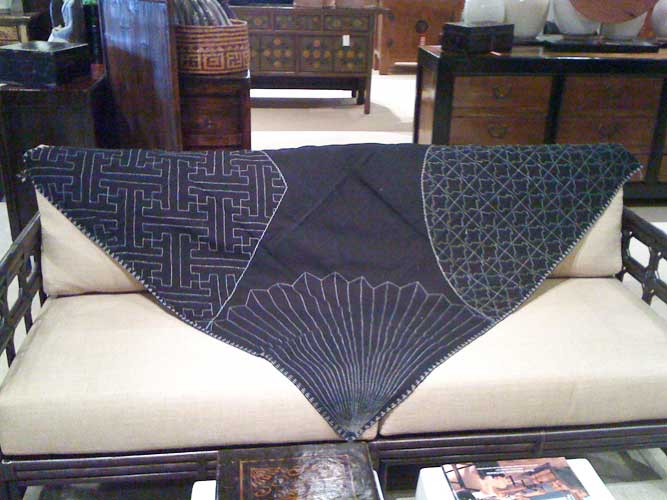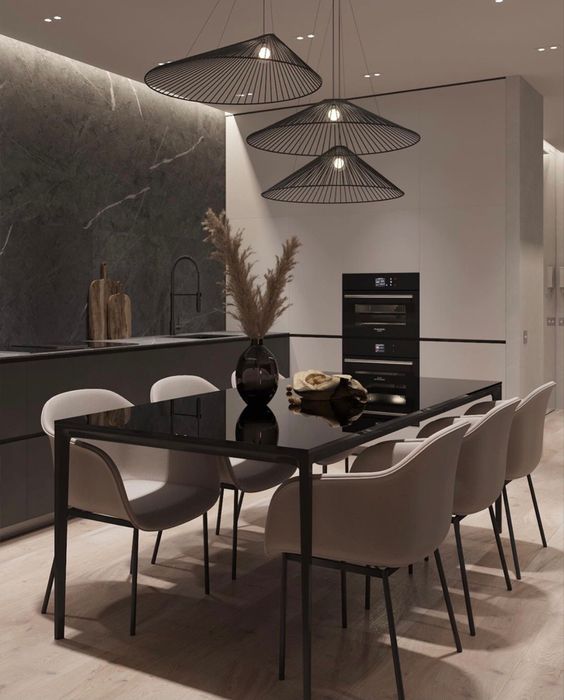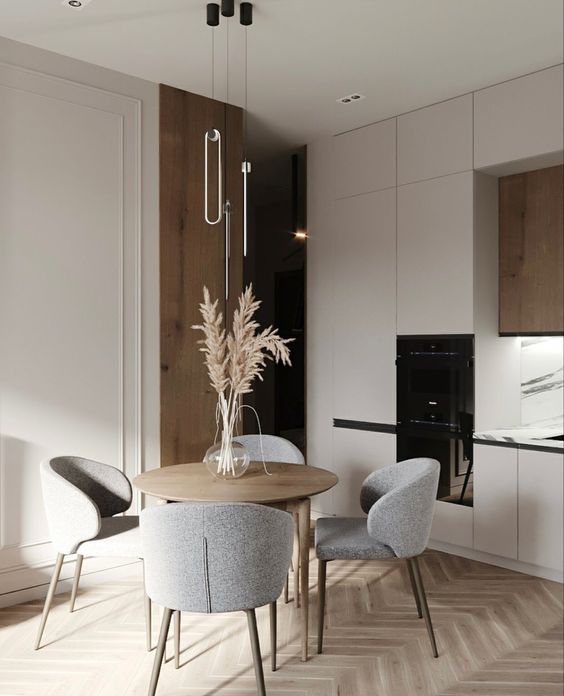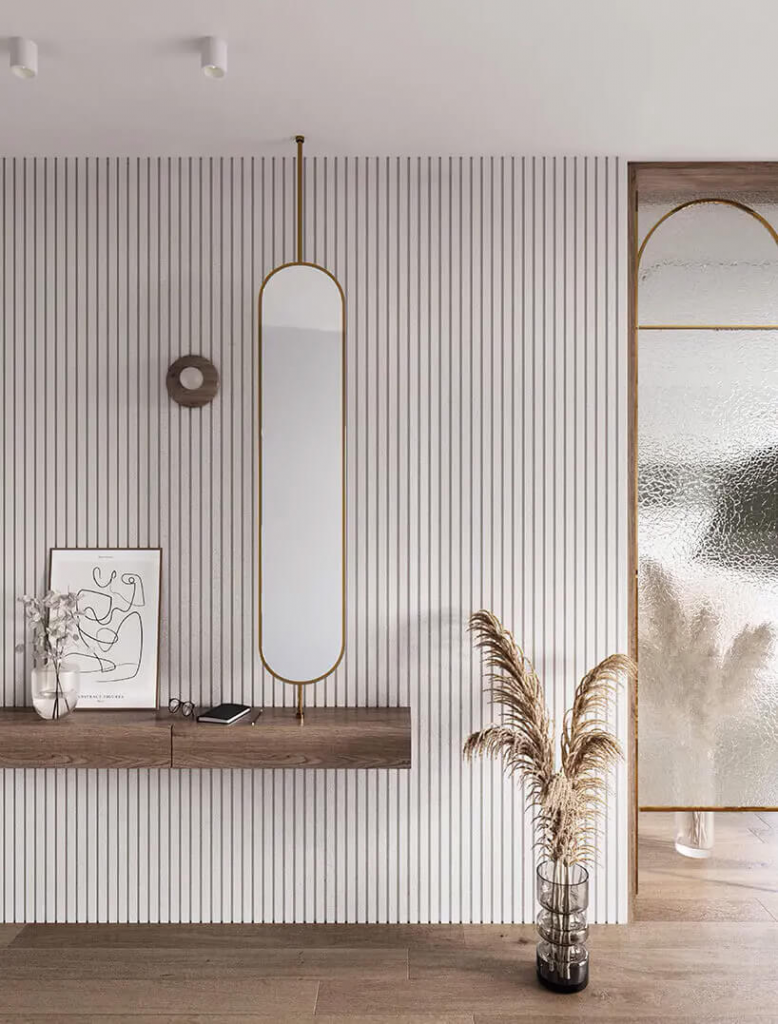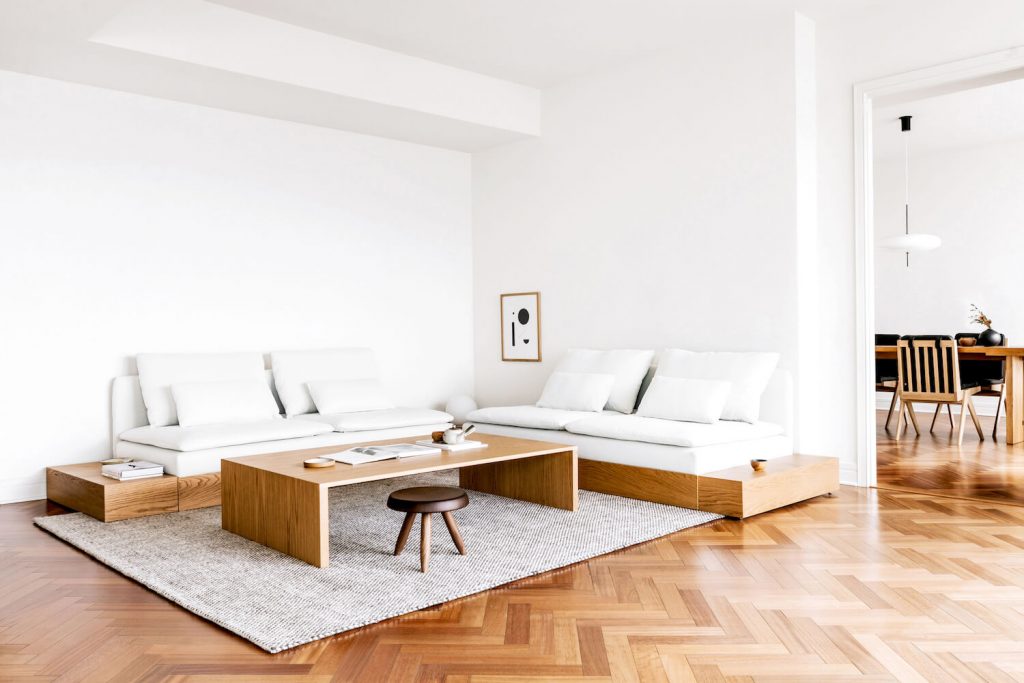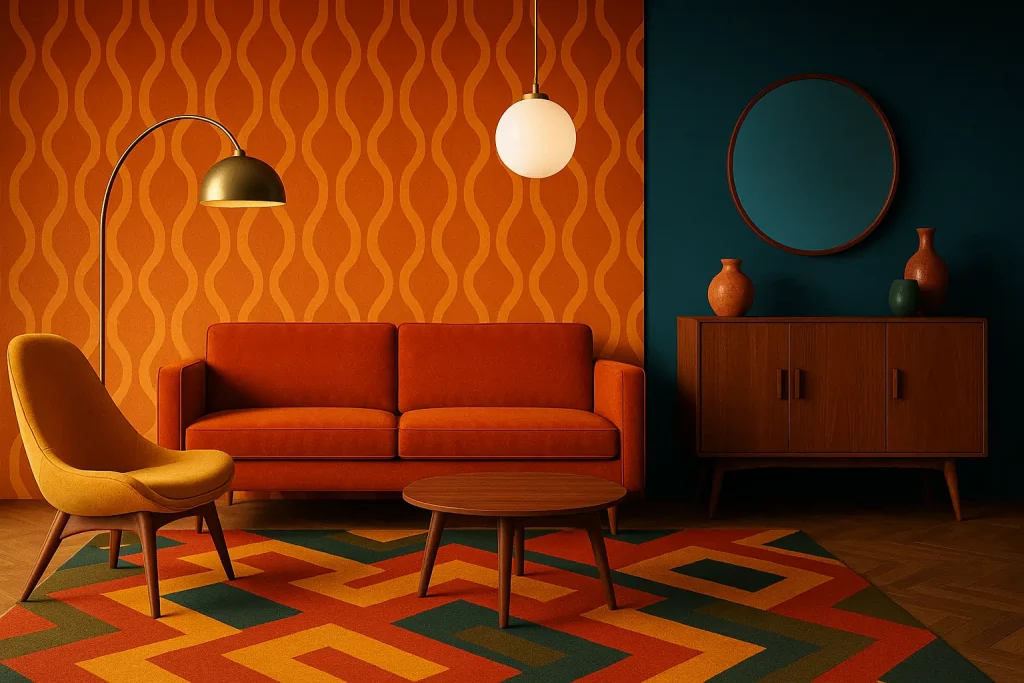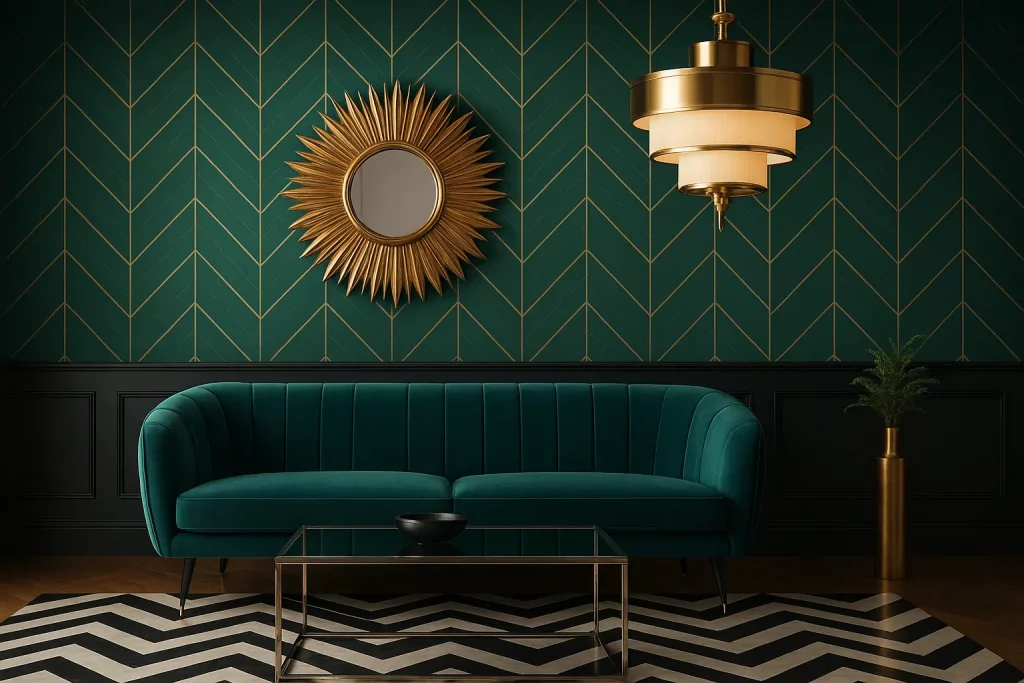What is Japandi Interior Design?
Japandi or Japanordic is a combination of Japanese and Scandinavian modern interior design styles. Despite Scandinavia and Japan varying distinctly in cultures (not to mention geographically so distant!), they share the same core design principles: an appreciation for functionality and simplicity, and a profound respect for nature and craftsmanship.
They are based on minimalist design principals focused on warm, natural elements and muted color palettes. Japandi style does not entertain ornate or gaudy details in your living room as interior design trends, only shiny shapes and lines.
The key features of the functional yet aesthetic style include plants and natural light. The style also focuses on simplicity, soft hues, natural materials and comfort.
Read also – 21 Types of Interior Design Styles
Japandi Materials
The primary materials used include natural fibers, hand-made pottery, décor, rattan, wicker, bamboo, cane, wood (walnut, acorn, and teak), linen, cotton and flax blends for upholstery. Its textiles are majorly from organic cotton muslin, organic brushed cotton, organic linen and velvet.
Its décor has majored in terra cotta, clay, glass, concrete, wood and plants. Its décor is supposed to be hand-made with solid colors and its patterns should have accents that are less bright and loud.
Origin of Japandi Interior Design Style
In order to have a clear understanding of Japandi (Japanese and Scandinavia) Style, it’s wise to understand the Japanese style which is basically on minimalist principles, clear lines and natural materials. The common characteristic is low furniture, blank walls, and neutral color palettes.
The modern Japanese style is based on having minimal items for larger volumes and spaces (Zen-feel). A variation in color and materials keeps a space minimal, clean and fresh. Japanese themed homes utilize warmer, light wood contrasted with touches of walnut and acorn tones for coffee tables to complement the color schemes.
The Scandinavian or Nordic design is also based on minimalism and its warmth and comfort are defined by its textiles and color palettes. The neutral palettes are mostly greys, whites, accented with blacks, and a combination of other neutral tones for home décor.
The style embraces a mix of materials from leather, velvet and knits, and crotchets to attain a desired hygge style. However, it gives more attention to details in furniture pieces. The combination of the two styles (rustic Japanese and functional Scandinavia) creates an arty feel, nature and simplicity. It’s a perfect blend of function and form with a focus on clear lines, light colors and bright spaces.
Read also – 15 Tips To Choose The Materials for Interior Design Projects
Image Credit: evolveindia.com
18 Ways To Integrate Japandi Interior Design Style Into Your Home
1. Depict sustainability
Using natural materials and recycling makes it a top-green option. The materials are eco-friendly and the furniture is of high quality. Its durability aspect makes one save on the frequent purchase. It’s thus, economical and prides in a timeless feel.
Image Credit: architectslocal.com
2. Warm palettes
Scandi palettes are mostly grey, white and brown while Japanese are pastels of autumn foliage, the sky and the earth tones. The hybrid Japandi style is a mix of calmness, tranquility and coziness. The hues are combined to mimic an earthy feel and natural landscape.
Read also – 16 Ways To Add Shabby Chic Interior Design Style To Your Home
Image Credit: abiinteriors.com.au
3. More craftsmanship
The furniture has a distinct artisan feel. Japanese culture is built on timber building as wood is available and versatile in the regions. Wood is, therefore, an available medium to make DIY décor, furniture and architectural structures. Since Scandi majors on comfort and simplicity, the combination draws excellently made yet functional and comfortable furniture pieces and décor elements.
Image Credit: weheartit.com
4. Minimal and Natural
The Japandi style is purely organic (rattan, cane, wicker, wood and bamboo) with clean lines and solid shapes in all the spaces. Its materials are comfortable and durable (cotton, linen and muslin). The designs encourage rest and relaxation without cluttering the spaces.
The interiors favor functionality over frills and mimic superior aesthetics. Timber stools, sisal rugs, terracotta pots, wool, raw wood, linen and hemp are great materials to integrate into your Japandi interior.
Read also – 7 Ways To Incorporate Steampunk Interior Design In Your Home
Image Credit: deavita.net
5. More comfort
Comfort is a top priority in Japandi style. Its bedrooms are majorly minimalist with the beddings, few art pieces and the throw pillows as the only decorative elements with no window dressings.
Image Credit: modsy.com
6. Stripped furniture
It is the primary and valued piece in a Japandi style. It, therefore, needs to be simple with subdued colors. The décor needs to be minimal while the furniture should be bold to draw a contrast.
One of the hallmarks of Japandi interiors is the use of low-profile furniture as being close to the earth inspires peace and serenity, and will provide a cozy and comfortable feel to your Japandi interior.
The Japanese have readily available Cedar (sugi), Red Pine (akamatsu), and Cypress (hinoki), whereas the Scandinavians mostly use Oak, Mahogany, Pine and Teak. You can integrate both wood tones into your Japandi home by creating a contrasting effect between light and dark woods. If you have putty-colored walls in your Japandi dining room, you can contrast by introducing rich dark brown wood on the lower cabinets.
Read also – 18 Ways To Incorporate Biophilic Interior Design into Your Home
Image Credit: behance.net
7. Mix and contrast
Since symmetry is not the main focus, one can combine different furniture to create an organic look. It’s essential to factor in the visual value of each item and concentrates on gaining balance rather than decoration. The rule of thumb applied in this design is less is best.
Image Credit: modsy.com
8. Refined décor
Decorations are maintained to a minimal degree to maintain a calm ambiance. Since Japandi furniture is exceptionally made, they are centrepieces that do not need many adornments.
Read also – 10 Ways To Style Your Home With Eclectic Design
Image Credit: wixstatic.com
9. Emphasis on handcrafts
The furniture and décor are reliant on artisans’ tasks. AS the pieces are handmade, it equates to uniqueness and similarities are rare. For its décor materials, clay, glass, wood, and stone are aesthetically fit. Other natural materials may include ceramics, bowls, or large lighting fixtures from natural elements. A soft shaggy rug is a valuable asset and draws warmth to the cool scandi aspect.
Image Credit: architecturesideas.com
10. Inclination to nature
Abstract décor drawn from the Scandinavia design forms a good base to tone the natural landscapes. It can be complemented by sand-colored canvas or simple line art. Although both Scandi and Japanese styles focus on greenery aspects, the Japandi style focuses on fewer but bigger plants. The delicate branches in large ceramics equate to colorful vignettes.
Read also – A Guide To Art Deco Interior Design Style for Your Home
Image Credit: livelarq.com
11. Utilization of sashiko stitching
Sashiko (little stitches) is an ancient Japanese embroidery technique originating from the sixteenth century. It is a simple sewing technique with a needle that was originally used for quilting, where several layers were sewn together, for reinforcement.
The motifs are often classic, geometric or organic patterns, and often derive inspiration from nature. Traditionally, sashiko is stitched on indigo-dyed cotton with white thread. The indigo-coloured fabric is painted from a dark blue dye with a violet tone originally extracted from plants.
Read also – Bohemian Interior Design Style for Colorful Decor
Image Credit: pinterest.com
12. Usage of shoji lightings and panels
Shoji is a door or a window separating spaces (Japanese style). It’s translucent with sheets on a lattice frame. It’s designed to slide but it can occasionally be hinged in a rustic style. Its light weight makes it easy to slide or be removed and stored in a closet.
Japanese traditional buildings may have only one large room, under a roof supported by a post-and-lintel frame, with few or no permanent interior or exterior walls. The space is then flexibly subdivided as needed by the removable sliding wall panels.
The posts are generally placed one tatami-length (about 2 m or 6 ft.) apart, and the shoji slide in two parallel wood-groove tracks between them. In modern architecture, the shoji often does not form the exterior surface of the building; they sit inside a sliding glass door or window.
Shoji is valued due to drawing out shallow boundaries between the interior and the exterior. The exterior effects can be felt from the inside such as the swaying silhouettes of trees, or the chirping birds from the elongated trees and greeneries.
As exterior walls, shoji illuminates sunlight rays into the house; while interior partitions, they transmit natural light deep to the interiors. While shoji block wind, they do allow air to diffuse through which is essential when the buildings use charcoal to heat up the spaces.
Similar to curtains, shojis offer visual privacy, with unrestrictive sounds. Shojis also foster effective communication through soft, calm, and graceful speeches. Soft speeches are a critical ethos influencing the sukiya-zukuri architecture. However, sliding doors cannot traditionally be locked.
Read also – 15 Ways To Add Coastal Interior Design Style To Your Home
Image Credit: pinterest.com
13. Comprehension of the symbolism in Japandi
Japandi is more than just a style; it is a philosophy of life. The embracement of Japanese simplicity and the rustic Scandinavian style, in splendid interplay, creates Japandi. It is characterized as a stylistic design movement, defined by its simple emotions and elegant details uniting the best of both worlds.
Japandi builds on the Japanese expression “wabi-sabi”, which is about finding beauty in the incomplete and the imperfect. This imperfection is expressed in the combination of clean lines, raw functionality, as well as utter and flawless craftsmanship. Wabi-sabi is a Japanese philosophy dominant since the fifteenth century.
The trend emerged as a reaction to the dominant styles of the time, which were strongly influenced by lavishness and the use of rare materials. Wabi-sabi is all about finding the beauty of the imperfect and about connecting an individual to the Earth with an appreciation of genuine and authentic aspects of life.
Read also – Mediterranean Interior Design Style
Image Credit: pinterest.com
14. Curate everything
The best Japanese and Scandinavian interiors convey simplicity. All items in a Japandi interior are limited to frills and excessive embellishments. It doesn’t imply boring! It just means everything needs careful selection and curation. Japandi celebrates the concept of danshari (ridding oneself of any item that creates negative feelings or that weighs one down, and keeping only those items you truly love).
The number of art pieces on display in a Japandi home should be kept to a minimum; meaning what normally might be a gallery wall of several paintings, be reduced to just one or two large pieces of your favorite art.
Read also – 9 Ways To Integrate Minimalist Interior Design Into Your Home
Image Credit: pinterest.com
15. Add a wall texture
In traditional Japanese interiors, it is not unusual to find walls made in bamboo or cedar panels, adversely, Japandi walls feature a similar texture. It is a great way to add some visual interest to a fairly minimal space.
You can lie across the wall with thin, vertical wood strips to create architectural interest. Wood slated walls are relatively simple to DIY and offer high-end by-products. An additional benefit is its affinity for sound-proofing. The slated look can be attained by installing wood strips one by one or you can purchase pre-made bamboo panels.
Read also – 9 Ways To Incorporate Modern Interior Design Style In Your Home
Image Credit: pinterest.com
16. Pops of color
If you’re thinking about adding bold colors to spice up your Japandi interior, tread carefully! When decorating Japandi style, bright color pops are generally kept to a bare minimum. However, you can stick to pieces featuring simple lines or patterns and basic forms. The best pop color would suit a natural element, such as a vibrant greenhouse plant like a bonsai, or a bamboo plant.
Image Credit: posterstore.com
17. Multifunctionality & flexibility
It is a pretty well-known fact that both the Scandinavians and the Japanese appreciate functional items in their homes. However, flexibility is an often-overlooked characteristic of Japanese design. For example, the Japanese beds are often folded up and put away when not in use, and portable rice paper screens are moved around as needed to define or section off areas in the home.
Japanese heated tables (called kotatsu), which are often at the center of a Japanese home and are multifunctional. Origami-inspired foldable furniture and furniture that can double as storage is perfectly appropriate in Japandi interiors.
Image Credit: living4media.com
18. Flooring
Japandi floors are generally hardwood, but you can choose to either have a light tone or a dark tone for your space. Sometimes the floors will be laid out in a herringbone pattern. If you have deep, brown wooden flooring, you can add contrast with a beautiful natural cream-toned rug.
Read also – 11 Modern Rustic Interior Design Ideas For Your Home
Image Credit: italianbark.com
Foyr Neo is the lighting fast interior design software that helps to design homes with various types of interior design styles. it builds on designers and students equipping them with skills. The article on Japandi style is suitable for interior designers and homeowners as it covers the features to incorporate in Japandi interior designs, the history behind the style and how to foster aesthetics and comfort by using the Japandi style.
Conclusion
Japandi style is the best style feature to attain a Zen feel and comfort. Its décor uses a minimal style and the décor pieces are more inclined to large plants and green hues.



